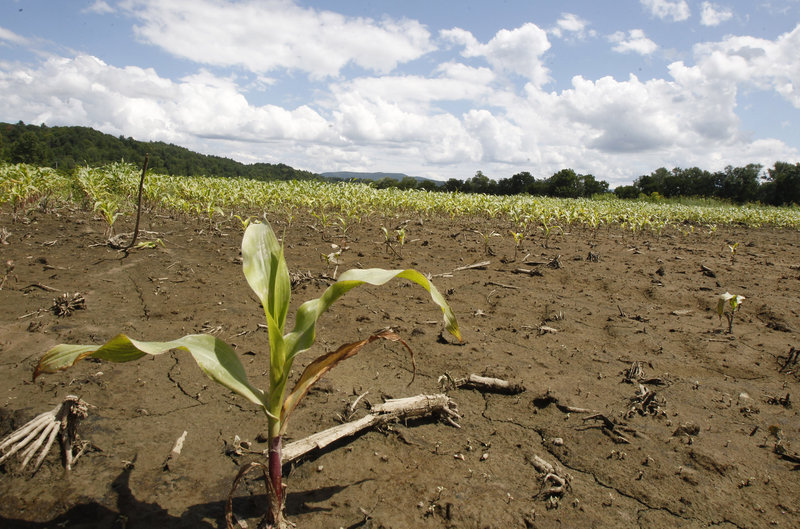WILLISTON, Vt. – In his 40 years of dairy farming in Vermont, Don Pouliot has never seen weather like he has this spring and early summer.
His fields of feed corn on the Browns River in Westford and Essex have been under water five or six times this year. Typically, they flood once a season and dry out, but the onslaught of heavy rains has left them in water and wet silt for long periods, killing or rendering much of the crop to feed his cows useless. Pouliot estimates he’s lost 75 percent of his crop.
Two years after Tropical Storm Irene flooded crops and carried away farmland, Vermont farmers are getting drenched again with unprecedented rains.
“It’s affected every single sector of the ag economy: our dairy farmers trying to grow silage, trying to grow hay, grow feed; it’s affected our berry farmers, our vegetable farmers, our beef and meat farmers. There’s no one who’s escaped some damage,” said Gov. Peter Shumlin as he and Agriculture Secretary Chuck Ross visited a dairy farm in Williston on Thursday.
They urged farmers to document the damage with photographs and records for possible future aid. They also advised reporting damage to federal Farm Services Agency offices that are collecting data on the weather’s impact and are expected to seek an emergency disaster declaration after harvest. A declaration could make loans available to farmers.
Farmers who have crop insurance should contact their insurance agent about the damage and those with coverage through the noninsured crop disaster assistance program should report crop losses or potential losses to their local office, the officials said.
Since the end of June, Vermont has had a near-constant barrage of thunderstorms that has caused flash flooding in many communities. The heavy rains have hit all parts of the state.
In the worst case scenario, Lorenzo Whitcomb of Whitcomb Farm in Williston estimates he’ll lose 25 percent of his corn crop for his dairy cows. Of his 300 acres of corn, about 50 acres were directly affected by high water or rain and 10 acres of that is likely dead.
Whitcomb is now trying to maximize what he has, adding fertilizer to the fields and hoping the crop will be of high nutrient value.
Pouliot is replacing his damaged corn with sorghum.
With drier weather in the weekend forecast, farmers plan to be busy in their fields. To give them a boost, Ross urged fellow Vermonters to buy locally produced food and lend a hand in the fields or drive a tractor.
“We always in this business have to be optimistic,” Whitcomb said. “This year, we just have to try a little bit harder to be optimistic.”
Send questions/comments to the editors.



Success. Please wait for the page to reload. If the page does not reload within 5 seconds, please refresh the page.
Enter your email and password to access comments.
Hi, to comment on stories you must . This profile is in addition to your subscription and website login.
Already have a commenting profile? .
Invalid username/password.
Please check your email to confirm and complete your registration.
Only subscribers are eligible to post comments. Please subscribe or login first for digital access. Here’s why.
Use the form below to reset your password. When you've submitted your account email, we will send an email with a reset code.